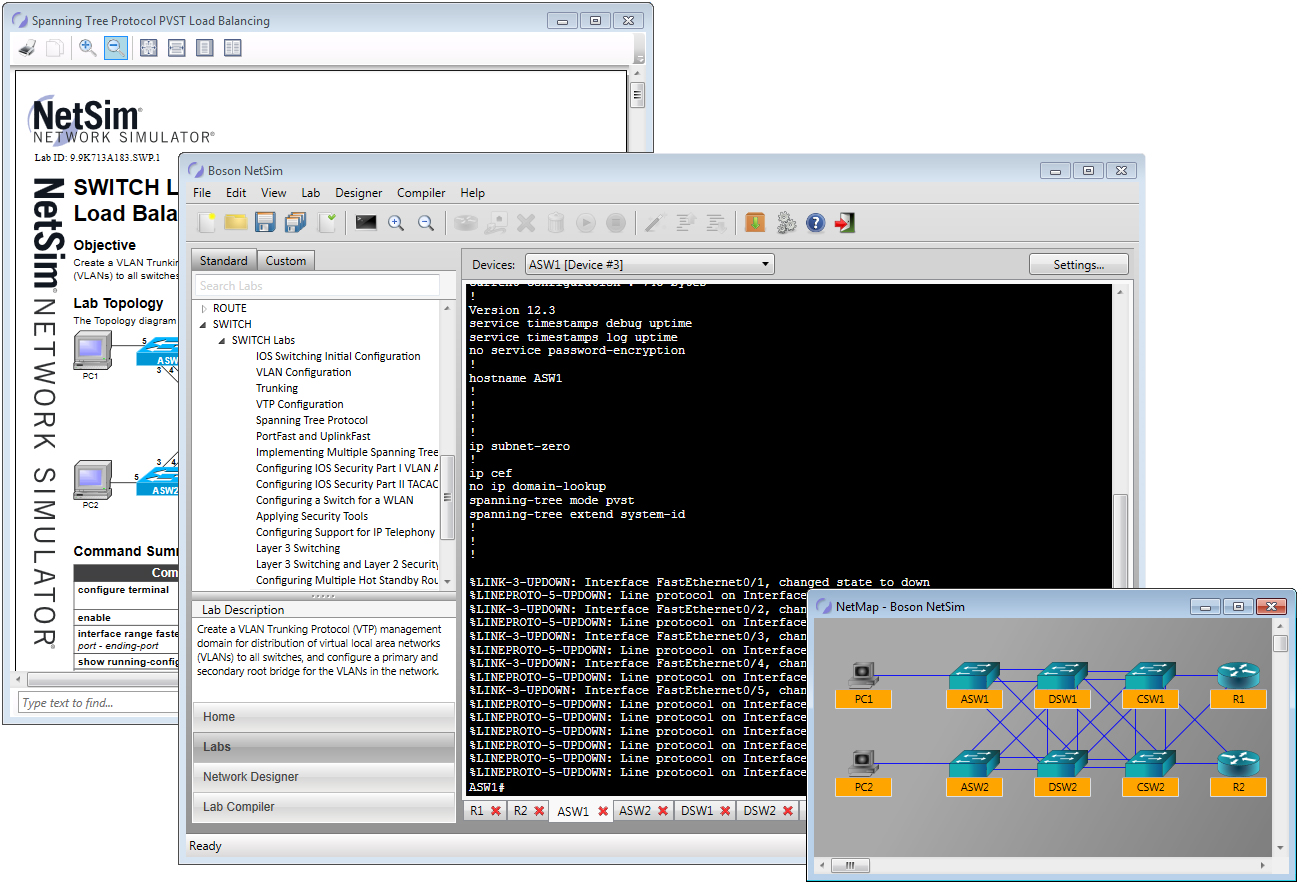By James Hanback
Back in the early aughts I could sometimes be seen lugging around gargantuan certification study guides that—once I obtained certification—ended up either creating a sizable footprint on my reference shelf or propping my bedroom door open at night. Although printed books have been and always will be a convenient means of carrying information with you, tomes such as certification study guides can be cumbersome to juggle alongside your briefcase, your laptop bag, your lunch, and the various mobile devices you carry along on your daily jaunt through this thing called modern life. Nevermind trying to maintain that balancing act while crossing a busy intersection, trying to jam your car keys into your pocket or purse, and keeping yourself dry of the hot coffee that’s sloshing around in your travel mug.
How to Activate and Use Boson’s Digital CCNA Courseware
Oct 23, 2013 9:51:00 AM / by Kelson Lawrence posted in activating digital CCNA Courseware, javelin reader, activating ccna curriculum
MS Windows Tips and Tricks | 2.8.2. Windows Firewall – Part 2
Oct 2, 2013 12:25:00 PM / by Kelson Lawrence posted in Windows Firewall, WF, scope, block edge traversal, part 2, protocols and ports, programs and services, edge traversal
2.8.2. Windows Firewall – Part 2
By Val Bakh
In last month’s blog post about Windows Firewall (WF), we introduced network firewalls and host-based firewalls and explained the general principles of their operation. We also became acquainted with WF, its most important general settings, and two types of rules. Now we’ll discuss both types of WF rules and examine their main settings. We will also consider an example scenario that illustrates how the two types of rules work together.
The Perils of Default
Sep 17, 2013 2:05:00 PM / by Kelson Lawrence posted in default cisco hardware settings, Perils of Default
Using Syslog to Stop the Mad Power Cycle
Sep 10, 2013 10:05:00 AM / by Kelson Lawrence posted in Syslog
By James Hanback
If you’ve ever worked a help desk job in a small office environment, you might have unwittingly trained the end users in your company that a simple restart is the magical solution to every problem, from slow performance to a crashing application. It might even clear up your acne and cure that nagging cough you can’t seem to kick. Naturally, you know better. But over the many years that computer systems have entrenched themselves in every niche of our lives, some of the most common problems end users face have been most easily solved—at least in the short term—by a system reboot (or by pressing the Caps Lock key). So the user reboots and, hopefully, moves on.
NetSim 9 GUI Updates | September 4, 2013
Sep 4, 2013 10:40:00 AM / by Kelson Lawrence posted in separate windows, lab instructions, netmap
By Brian Scheibe and Kelson Lawrence
Quick NetSim 9 GUI update here....The NetSim 9 GUI has recently been updated to include several features that you should find helpful to your studies.
MS Windows 7 Tips and Tricks | 2.8 Security
Aug 27, 2013 9:53:00 AM / by Kelson Lawrence posted in Windows Firewall, WF
2.8.1. Windows Firewall – Part 1
By Val Bakh
This article is a high-level introduction to firewalls in general and Windows Firewall (WF) in particular. It provides a simplified, conceptual view of the relevant functionalities and is intended as light-reading material for those who are unfamiliar with firewalls, rather than as an instruction manual for professional IT administrators. It will be easier for you to understand this material if you have access to a computer running Windows 7 or Windows 8 and if you open and review the WF dialog boxes that are discussed here.
Putting a Clock In It with Network Time Protocol
Aug 21, 2013 10:14:00 AM / by Kelson Lawrence posted in Network Time Protocol, UDP, User Datagram Protocol
How to Tame a Wild OSPF Topology Using Router IDs
Aug 14, 2013 8:54:00 AM / by Kelson Lawrence posted in OSPF Router ID, OSPF Router IDs
By James Hanback
You can pick your Open Shortest Path First (OSPF) router. You can pick your OSPF router ID. And if you don’t pick your router ID, the routing protocol will attempt to do it for you.
TSHOOT - Stare and Compare
Aug 5, 2013 8:40:00 AM / by Kelson Lawrence posted in exam tips, TSHOOT, stare and compare
By Michael Aldridge
As I mentioned in my previous blog post, Cisco's 642-832 TSHOOT exam, part of the Cisco Certified Network Professional (CCNP) Routing and Switching track, is one of the most unique exams I have ever taken. Not only are there multiple choice and drag-and-drop questions, there are also trouble tickets that you will have to diagnose.
Troubleshooting Techniques
Jul 31, 2013 8:49:00 AM / by Kelson Lawrence posted in troubleshooting techniques, bottom up, top down, divide and conquer, OSI network model
By James Hanback
We live in a hurry-up world.
There's the person behind you in traffic who leans on the horn if your brake lights don't go dark during the nanosecond that the traffic light is transitioning from red to green. There's the one behind you in the self-checkout lane who does the heavy sigh and eye roll bit because you must take the time to dislodge your rewards card from your wallet so you can start scanning your groceries (you knew you should have installed that rewards card app on your smart phone). Oh, and then there's the person who blows past you at the speed of light on a single-lane stretch of highway only to find you puttering up behind them at the next clogged intersection. You no doubt chuckle quietly to yourself as you await the go signal on such an occasion because you know that you've covered the same amount of distance and arrived at a simultaneous point with the speed demon, but at a lower fuel cost.









